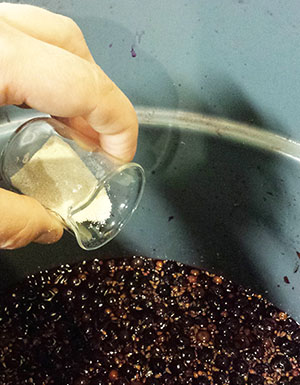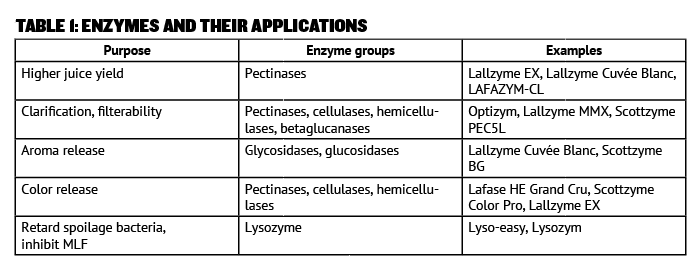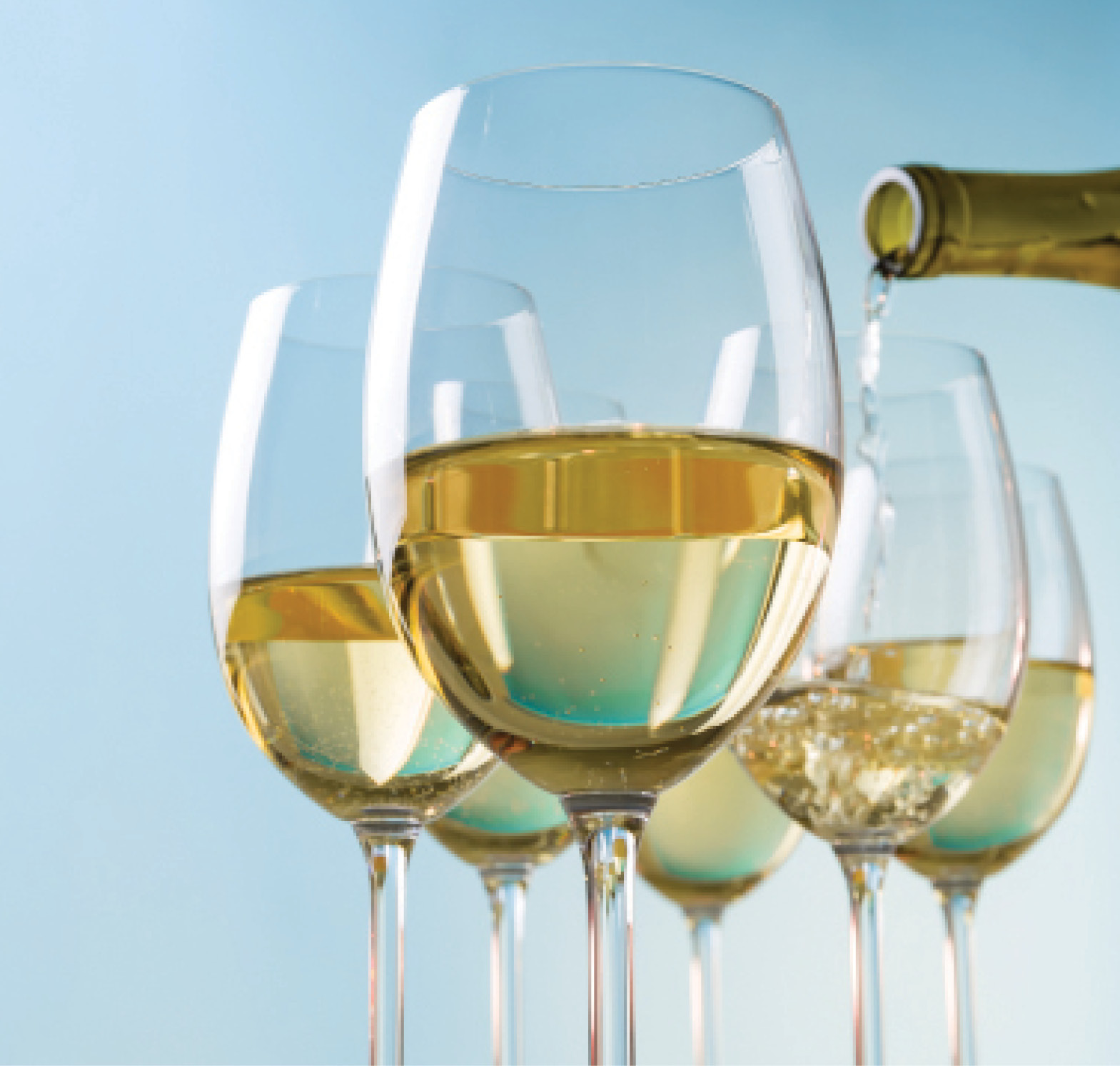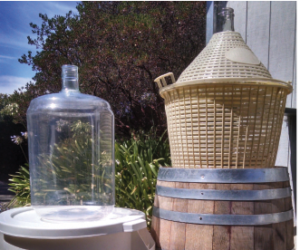 When pioneers of winemaking like Louis Pasteur or André Tchelistcheff are mentioned, James B. Sumner is often overlooked. Nonetheless, this Nobel-prize-winning chemist (1946) set in motion the entire scientific field for today’s article. In 1926, Sumner successfully crystallized the enzyme urease and performed chemical analysis that demonstrated that urease is a protein. Not at all shocking today, the results were revolutionary at the time. The existence and activity of enzymes had been previously observed, but their exact nature and modes of action had not been discovered.
When pioneers of winemaking like Louis Pasteur or André Tchelistcheff are mentioned, James B. Sumner is often overlooked. Nonetheless, this Nobel-prize-winning chemist (1946) set in motion the entire scientific field for today’s article. In 1926, Sumner successfully crystallized the enzyme urease and performed chemical analysis that demonstrated that urease is a protein. Not at all shocking today, the results were revolutionary at the time. The existence and activity of enzymes had been previously observed, but their exact nature and modes of action had not been discovered.
Thanks to Sumner (and subsequent researchers), we know that all enzymes are proteins and they act as biological catalysts. They act on specific substrate molecules where they execute a range of repeated chemical reactions, not being destroyed themselves in the process. They are critical to life processes, facilitating reactions that otherwise might not take place at all and accelerating others that would be too slow. Naturally occurring (endogenous) enzymes have always played key roles in fermentation and development of wine. The naming of enzymes, with the characteristic ending –ase, will usually give a clue as to their principal activities. For instance, pectinases act on pectins and cellulases act on cellulose.
It is enzymes in the yeast cells that facilitate the conversion of sugar to ethanol and carbon dioxide. Enzymes in certain bacteria strains catalyze the conversion of malic acid to lactic acid in malolactic fermentation. Even before fermentation begins, enzymes in the ripening grapes produce the color, aroma, and flavor compounds that will later define the wine. In the process used for making nouveau style wines, carbonic maceration, Philip Jackisch (in his book Modern Winemaking) notes: “Whole grapes are placed in a container filled with carbon dioxide and permitted to stand for a week or more while natural enzymes soften them until they ooze juice. Fermentation starts from the natural yeast on the skins.” There are also some problematic enzymes natural to grapes and wine. Polyphenol oxidases or PPOs are the enzymes in grapes (and other fruits) that facilitate browning on exposure to air. Preventing those reactions, especially in white juice or must, depends on excluding oxygen, since the enzymes are present.
Winemaking Enzymes
Because enzymes act in different ways on different targets, there is no single “enzyme treatment” for home wine use. Purposes for adding enzymes include improved juice yield from the must, better clarification and easier filtration, better release and stabilization of red wine color, release of aroma compounds (especially in aromatic white varieties), and prevention of malolactic fermentation.
Pectinate
Pectic enzymes break down pectins in fruit. Pectins are polysaccharides (polymers of sugar molecules) that exist in the middle layer of cell walls of plants. Most prominently for our purposes, they help hold together and give structure to the cell walls of grapes. As grapes ripen, natural pectic enzymes (pectinase and pectin esterase) break down some of these pectins, allowing cells to move apart and causing the fruit to soften. During maceration of red or white must after crushing, natural pectinases are further breaking down cell tissue and helping to release free-run juice. Adding appropriate dosages of commercially prepared pectic enzymes will enhance that process and improve yield. In a small bench-top trial with shredded apples, I was able to increase juice production by 14% after letting one portion of the must sit at room temperature with pectic enzymes for one hour before pressing (as compared with pulp from the same lot of apples not treated with pectic enzyme). Similar yield improvements may occur in grape must as well.
An additional benefit from pectinase additions is better clarification of juice and more reliable settling. Particularly if you crush and press white grapes then allow the juice to settle to rack off prior to fermentation, your yield will gain two benefits from enzyme use: More juice at the press and more compact fruit lees when you settle. Commercial products consisting primarily of pectic enzymes include Scottzyme PEC5L and LAFAZYM-CL. Some of the pectinase enzyme preparations also contain cellulases and hemicellulases that act on other plant polysaccharides. Cellulose and hemicellulose are structural polymers in plant cell walls and woody plant material. Enzymes that break down those compounds will improve juice yield and improve filterability as well. Lallzyme EX is one of the preparations specifically noted as containing hemicellulases for action on grape cell walls.
Anthocyanins are polyphenolic compounds in grape skins that are responsible for red and purple colors. As known by any home winemaker who has pressed red wine, a great deal of color is left in the skins following maceration, fermentation, and pressing. Some conventional wine production techniques, such as cold soaking before fermentation or extended maceration after, can improve extraction and stabilization of these colors. Enzymes can also be employed for similar purposes. The same Lallzyme EX, Scottzyme Color Pro, or similar pectinase products that may assist with juice yield and clarification can also help release anthocyanins for better color. They also help release other wine phenolic components and tannins, generally benefiting the wine with enhanced mouthfeel and a smoother character on the palate.
Betaglucanase
Beta glucans form another group of polysaccharides that may inhibit juice or wine settling and may cause difficulty during filtering. In grapes with significant amounts of rot, there may be enough glucan secreted by spoilage molds such as Botrytis that routine wine processing becomes difficult. For these conditions, betaglucanase enzymes can break down the problematic polysaccharides and help clarify the wine or juice.
Glycosidase and Glucosidase
Aromatic white wines often contain terpenes, a large class of aromatic hydrocarbons. While conifers are prominent producers of plant terpenes and the name drives from turpentine, many of the compounds have very pleasant and distinctive aromas when produced in fruits. In grape varieties such as Gewürztraminer or Muscat one may find compounds like linalool with a floral and spicy scent and geraniol with rose-like notes. Some fraction of these aroma compounds present in the grapes will be bound to a sugar molecule, forming odorless glycosides. (When the sugar in question is glucose, the compound is a glucoside. General glycosides may involve any sugar type.) While some of the glycosides will naturally degrade during maceration or fermentation, others may be lost with the pomace or remain bound in the wine and never manifest their aroma signature. To assist the development and release of aromas, enzyme preparations that contain glucosidases are available. If they also contain pectinases, they assist with juice yield, clarification, and filterability while helping release characteristic varietal aromas. Note that some such products, such as Lallzyme Cuvée Blanc, are intended as macerating enzymes for use prior to fermentation. When formulated just as glucosidases, as with Scottzyme BG, they are instead used in wine after fermentation to help release remaining terpenes that are present but sugar-bound and therefore not perceptible by smell. Products like this are inhibited by high sugar levels and should not be used in the fruit must prior to fermentation.
Lysozyme
A completely different use of added winemaking enzymes is the use of lysozyme to inhibit, prevent, or stop malolactic fermentation (MLF). Lysozyme is a naturally occurring enzyme that has the specific anti-microbial activity of attacking the cell wall of Gram-positive bacteria and killing them. (Endogenous lysozyme also occurs in human tears, protecting the eyes against Gram-positive pathogens.) Winemaking lysozyme preparations, like Lallemand Lyso-Easy or Laffort Lysozym, are extracted from hen egg whites and are intended for use at several stages of winemaking. Lysozyme has no effect on Gram-negative bacteria such as Acetobacter, the primary source of volatile acidity (vinegar) spoilage. Nor is it effective against spoilage yeast such as Brettanomyces, so it in no way replaces the need for regular use of sulfites in clean winemaking. It is, however, highly effective against Oenococcus oeni (used in malolactic fermentation) and other lactic acid bacteria. In stuck or sluggish fermentations it can be added to reduce spoilage bacteria populations that may be inhibiting yeast (although exercise caution with potentially low-color reds like Pinot Noir, as a lysozyme addition may cause color to drop out). After primary fermentation, lysozyme can be added to delay or prevent the start of malolactic fermentation. It can be removed later if the winemaker wishes to proceed with MLF.

Using Enzymes
As noted earlier, enzymes are proteins. Thus, they can be fined out of wine just like any other protein. Bentonite is commonly used to remove proteins and help insure stability against protein haze formation. Because of their mutual antagonistic effects, enzymes and bentonite should not be added together. If a juice-clarification enzyme has done its work, the later addition of bentonite before fermentation may aid further clarification; it will also stop the work of the enzyme. If aroma-releasing enzymes have been employed in fermented white wine, it may be desirable to fine with bentonite to reduce the risk of a protein haze from added enzymes. This is also important in wines treated with lysozyme against bacterial spoilage or to prevent MLF. Whether the goal has been just to delay MLF or to prevent it entirely, bentonite fining after lysozyme can prevent protein haze or prepare the wine for inoculation with a selected MLF product.
While the trade name of an enzyme may give you an idea of its intended purpose, it is not really enough to help you decide whether — or which — enzyme product to use in your hobby winemaking. To make that decision, you need to think about what you want to accomplish, then look for a product to do that. Read the manufacturer’s tech sheet on likely candidates, looking for key components and recommended applications. The table above identifies the likely actors for your particular goals.
You will need to further consult the manufacturer’s tech sheet on your chosen product to assess the dose, method, and timing of the addition. Some of the products are dry granular materials. These are usually quite stable and need only cool, dry storage to maintain a good shelf life. Others are liquid preparations that may be subject to more rapid degradation. Buy fresh products at the time of each harvest to meet your specific objectives and in quantities that will be consumed in that year’s production. Dose requirements vary greatly. Liquid preparations may use as little as 1 mL/hL (1 mL in 26 gal) to as much as 25 mL/hL (1 mL per gallon). Dry materials can range from 7.5 mg/L (28 mg/gal) to 30 mg/L (114 mg/gal).
Examples
Here are example applications of one dry product and one liquid preparation to give you an idea of how you might use some enzyme products:
Lallzyme EX (dry granular product). Use rate of 15-30 g/ton of must. Using a mid-range dose of 20 g/ton, that would be 10 g/1,000 lbs. or 1 g/100 lbs (1 g/45 kg). Dissolve in 10 times its weight in clean, chlorine-free water (I use distilled water) at room temperature, so 10 mL of water for each gram of product. Stir gently and allow to stand for a few minutes. Add to the crushed grapes at the beginning of maceration or cold soak.
Scottzyme Color Pro (liquid preparation). Use rate of 60 to 100 mL per ton. At a mid-range dose of 75 mL/ton, that would be 37.5 mL/1,000 lbs. or about 4 mL/100 lbs. (4 mL/45 kg). Dilute with 10 times its volume of clean, chlorine-free water — 10 mL of water for every mL of product. Sprinkle the resulting solution over the grape must following crushing and destemming, then mix.
Try Enzymes
I have used enzymes in my wines for about four years, and they have helped me win gold medals in many competitions. As always, you—the winemaker—will need to decide how much intervention to make.






